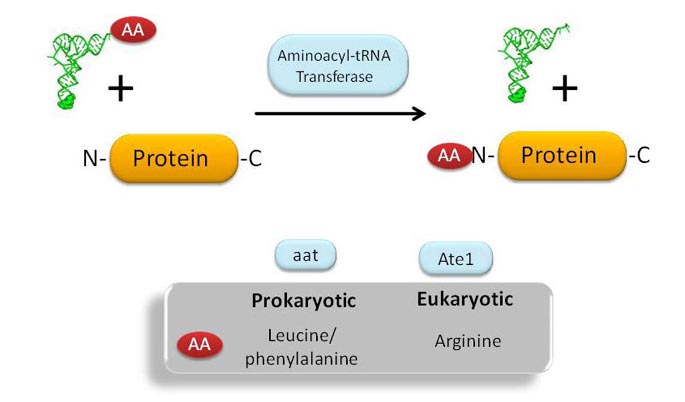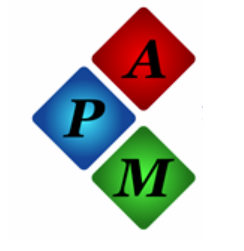...The Fahlman Lab...
Our Reseasrch
New Directions in tRNA Research.
RNA participates in diverse cellular processes. RNA is most broadly known for its role in protein synthesis (translation), where a messenger RNA (mRNA) is decoded by ribosomes via precise pairing between the codon sequences of the mRNA and the anti codons of transfer RNA (tRNA).
Our
interest is with small RNAs (tRNA and miRNA) and their roles outside
the boundary of the central dogma of molecular biology (DNA -> RNA
-> Protein). In particular we are investigating the role of tRNAs
in both ribosome free peptide bond formation and as a signaling
molecule for an organisms nutritional status.
Figure 1.

Post Translational Addition of Amino Acids. Both prokaryotic and eukaryotic organisms possess aminoacyl-tRNA transferase. Aminoacyl-tRNA transferases transfer an activated amino acid from a charged tRNA to the N-termini of a target protein (Figure 2). The identity of the amino acid which is transfered is inherent to the aminoacyl-tRNA tranderase. The L/F-transferase or aat from prokaryotes will transfer leucine or phenylalanine to the N-terminus of a substrate protein. The eukaryotic R-transferase or ATE1 exclusively transfers arginine (see Figure 2).
Figure 2.
Our research with these aminoacyl transferases is their role in the degradation of proteolytic products generated after protease activatio.
Starvation Related Signalling .
In all organisms, the accumulation of uncharged tRNAs in the cytoplasm
results in the activation of starvation related signalling networks. In
some organisms this results in the activation of the enes involved in
amino acid biosynthesis, while in higher organisms it results in eating
behavior modification. In the case of prokaryotes, such as E. coli, the
molecular steps resulting in the cellular signalling has been refered
to Stringency Responce (See Figure 3).

Laboratory Details
To learn more about our research or
research members follow one of the links below.
Research

We are investigating the roles of small
non-coding RNAs (such as tRNAs) on gene expression. For
investigations we are applying a variety of mass spectroscopy approachs
to our biochemical and cell biology studies.
People

Our research could not be accomplished
alone. Several people are a part of our research team.
Publications

Dr. Fahlman's research has ranged from tRNA biochemistry, DNA
nanotechnology and mass spectroscopy.
Protocols
We are trying to compile a series of protocols of a variety of
techniques for ous students and collaborators.
Fun Stuff

Not everything about lab life is about work. Here you will
find some of the other things we do in our spare time.
Links

Links to databases, software and other tools for RNA and proteomic
related research.
APM

Core facility for mass spectroscopy analysis, peptide synthesis,
amino acid analysis...
Richard Fahlman 2008. All rights reserved
